Spacecraft - Blog Posts
Solar System: Things to Know This Week

For the first time in almost a decade, we're going back to Jupiter. Our Juno spacecraft arrives at the king of planets on the fourth of July. From a unique polar orbit, Juno will repeatedly dive between the planet and its intense belts of charged particle radiation. Juno's primary goal is to improve our understanding of Jupiter's formation and evolution, which will help us understand the history of our own solar system and provide new insight into how other planetary systems form.
In anticipation, here are a few things you need to know about the Juno mission and the mysterious world it will explore:
1. This is the Big One

The most massive planet in our solar system, with dozens of moons and an enormous magnetic field, Jupiter rules over a kind of miniature solar system.
2. Origin Story

Why study Jupiter in the first place? How does the planet fit into the solar system as a whole? What is it hiding? How will Juno unlock its secrets? A series of brief videos tells the stories of Jupiter and Juno. Watch them HERE.
3. Eyes on Juno
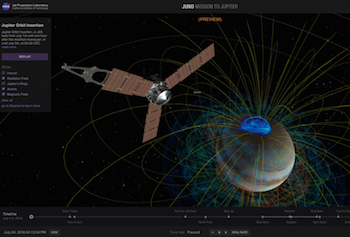
If you really want a hands-on understanding of Juno's flight through the Jupiter system, there's no better tool than the "Eyes on Juno" online simulation. It uses data from the mission to let you realistically see and interact with the spacecraft and its trajectory—in 3D and across both time and space.
4. You’re on JunoCam!

Did you know that you don't have to work for NASA to contribute to the Juno mission? Amateur astronomers and space enthusiasts everywhere are invited to help with JunoCam, the mission's color camera. You can upload your own images of Jupiter, comment on others' images, and vote on which pictures JunoCam will take when it reaches the Jovian system.
5. Ride Along
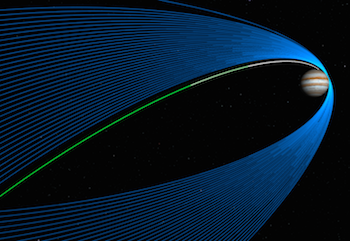
It's easy to follow events from the Juno mission as they unfold. Here are several ways to follow along online:
Want to learn more? Read our full list of the 10 things to know this week about the solar system HERE.
Make sure to follow us on Tumblr for your regular dose of space: http://nasa.tumblr.com
Solar System: Things to Know This Week
Our solar system is huge, so let us break it down for you. Here are a few things you should know this week:
1. Science at the Edge

As the New Horizons spacecraft speeds away at more than 31,000 miles per hour (14 km/s) it continues to explore the Kuiper Belt, the region of icy bodies beyond Neptune. New Horizons has now twice observed 1994 JR1, a 90-mile-wide object orbiting more than 3 billion miles from the sun.
2. A Spaceship, Refined

This artist’s rendering shows our Europa mission spacecraft, which is being developed for a launch sometime in the 2020s. The mission will place a spacecraft in orbit around Jupiter to explore the giant planet’s moon Europa. This updated concept image shows tow large solar arrays extending from the sides of the spacecraft, to which the mission’s ice-penetrating radar antennas are attached. A saucer-shaped high-gain antenna is also side mounted with a magnetometer boom placed next to it. Find out more about the spacecraft HERE.
3. Sojourn at Saturn

The Cassini spacecraft is hard at work this week, orbiting Saturn to study the planet and its rings. The recent pictures are spectacular, take a look at them HERE.
4. Talking Juno
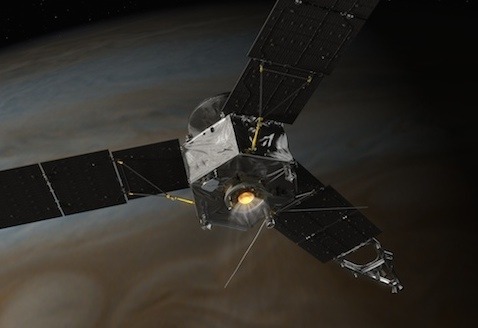
Our Juno mission arrives at Jupiter on July 4, and that presents a unique opportunity for educators, science communicators and anyone interested in space exploration. We are providing a growing set of Juno-related information resources. Take a look at them HERE.
5. Now THAT’S a Long Distance Call
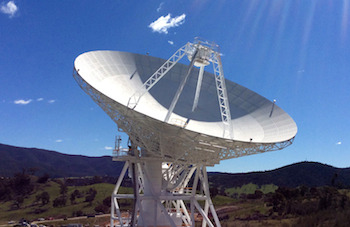
How do explorers on Earth talk to astronauts and robotic spacecraft flung across the far reaches of space? They use the remarkable technology deployed by our Space Communications and Navigation (SCaN) Program Office. This month, SCaN is celebrating its 10th anniversary of managing the ultimate network. Find out how it works HERE.
Want to learn more? Read our full list of the 10 things to know this week about the solar system HERE.
Make sure to follow us on Tumblr for your regular dose of space: http://nasa.tumblr.com
How will Cygnus Spacecraft Dock to Space Station?
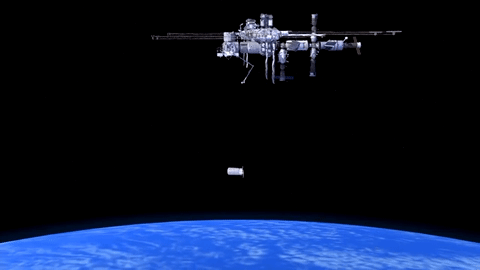
Orbital ATK’s Cygnus CRS-6 spacecraft launched to the International Space Station on March 22.
Cygnus will carry almost 7,500 pounds of science and research, crew supplies and vehicle hardware to the orbiting laboratory.
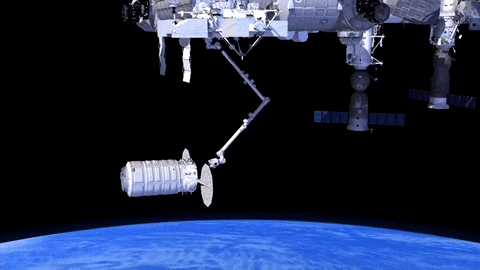
After launch in Florida, the spacecraft will arrive to the station on Saturday, March 26. Upon arrival, NASA astronaut and Expedition 46 Commander Tim Kopra will capture Cygnus at about 6:40 a.m. using the space station's Canadarm2 robotic arm to take hold of the spacecraft. Astronaut Tim Peake of ESA (European Space Agency) will support Kopra in a backup position.
Installation (when Cygnus is connected to space station) is expected to begin at 9:25 a.m. NASA TV coverage for installation resumes at 9:15 a.m.
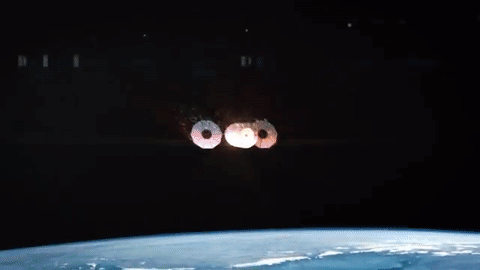
After the Cygnus spacecraft is berthed (connected) to the space station, the contents will be emptied and brought inside for use. Any trash that is on the space station, can be put inside the empty Cygnus before it is undocked from station and sent to burn up in Earth’s atmosphere.
Watch Capture
You can watch the capture of Orbital ATK’s Cygnus spacecraft online. Stream live coverage starting at 5:30 a.m. EDT on Saturday, March 26. Capture is scheduled for 6:40 a.m.
Tune in again at 9:15 a.m. to watch #Cygnus installation to the station.
Watch online: nasa.gov/nasatv
Make sure to follow us on Tumblr for your regular dose of space: http://nasa.tumblr.com
Ion Propulsion…What Is It?
Ion thrusters are being designed for a wide variety of missions – from keeping communications satellites in the proper position to propelling spacecraft throughout our solar system. But, what exactly is ion propulsion and how does an ion thruster work? Great question! Let’s take a look:

Regular rocket engines: You take a gas and you heat it up, or put it under pressure, and you push it out of the rocket nozzle, and the action of the gas going out of the nozzle causes a reaction that pushes the spacecraft in the other direction.
Ion engines: Instead of heating the gas up or putting it under pressure, we give the gas xenon a little electric charge, then they’re called ions, and we use a big voltage to accelerate the xenon ions through this metal grid and we shoot them out of the engine at up to 90,000 miles per hour.

Something interesting about ion engines is that it pushes on the spacecraft as hard as a single piece of paper pushes on your hand while holding it. In the zero gravity, frictionless, environment of space, gradually the effect of this thrust builds up. Our Dawn spacecraft uses ion engines, and is the first spacecraft to orbit two objects in the asteroid belt between Mars and Jupiter.
To give you a better idea, at full throttle, it would take our Dawn spacecraft four days to accelerate from zero to sixty miles per hour. That may sounds VERY slow, but instead of thrusting for four days, if we thrust for a week or a year as Dawn already has for almost five years, you can build up fantastically high velocity.

Why use ion engines? This type of propulsion give us the maneuverability to go into orbit and after we’ve been there for awhile, we can leave orbit and go on to another destination and do the same thing.
As the commercial applications for electric propulsion grow because of its ability to extend the operational life of satellites and to reduce launch and operation costs, we are involved in work on two different ion thrusters of the future: the NASA Evolutionary Xenon Thruster (NEXT) and the Annular Engine. These new engines will help reduce mission cost and trip time, while also traveling at higher power levels.
Learn more about ion propulsion HERE.
Make sure to follow us on Tumblr for your regular dose of space: http://nasa.tumblr.com
Solar System: 5 Things To Know This Week
Our solar system is huge, so let us break it down for you. Here are 5 things to know this week:
1. Make a Wish

The annual Leonids meteor shower is not known for a high number of "shooting stars" (expect as many as 15 an hour), but they're usually bright and colorful. They're fast, too: Leonids travel at speeds of 71 km (44 miles) per second, which makes them some of the fastest. This year the Leonids shower will peak around midnight on Nov. 17-18. The crescent moon will set before midnight, leaving dark skies for watching. Get more viewing tips HERE.
2. Back to the Beginning

Our Dawn mission to the dwarf planet Ceres is really a journey to the beginning of the solar system, since Ceres acts as a kind of time capsule from the formation of the asteroid belt. If you'll be in the Washington DC area on Nov. 19, you can catch a presentation by Lucy McFadden, a co-investigator on the Dawn mission, who will discuss what we've discovered so far at this tiny but captivating world. Find out how to attend HERE.
3. Keep Your Eye on This Spot

The Juno spacecraft is on target for a July 2016 arrival at the giant planet Jupiter. But right now, your help is needed. Members of the Juno team are calling all amateur astronomers to upload their telescopic images and data of Jupiter. This will help the team plan their observations. Join in HERE.
4. The Ice Volcanoes of Pluto

The more data from July's Pluto flyby that comes down from the New Horizons spacecraft, the more interesting Pluto becomes. The latest finding? Possible ice volcanoes. Using images of Pluto's surface to make 3-D topographic maps, scientists discovered that some mountains on Pluto, such as the informally named Piccard Mons and Wright Mons, had structures that suggested they could be cryovolcanoes that may have been active in the recent geological past.
5. Hidden Storm

Cameras aboard the Cassini spacecraft have been tracking an impressive cloud hovering over the south pole of Saturn's moon Titan. But that cloud has turned out to be just the tip of the iceberg. A much more massive ice cloud system has been found lower in the stratosphere, peaking at an altitude of about 124 miles (200 kilometers).
Make sure to follow us on Tumblr for your regular dose of space: http://nasa.tumblr.com